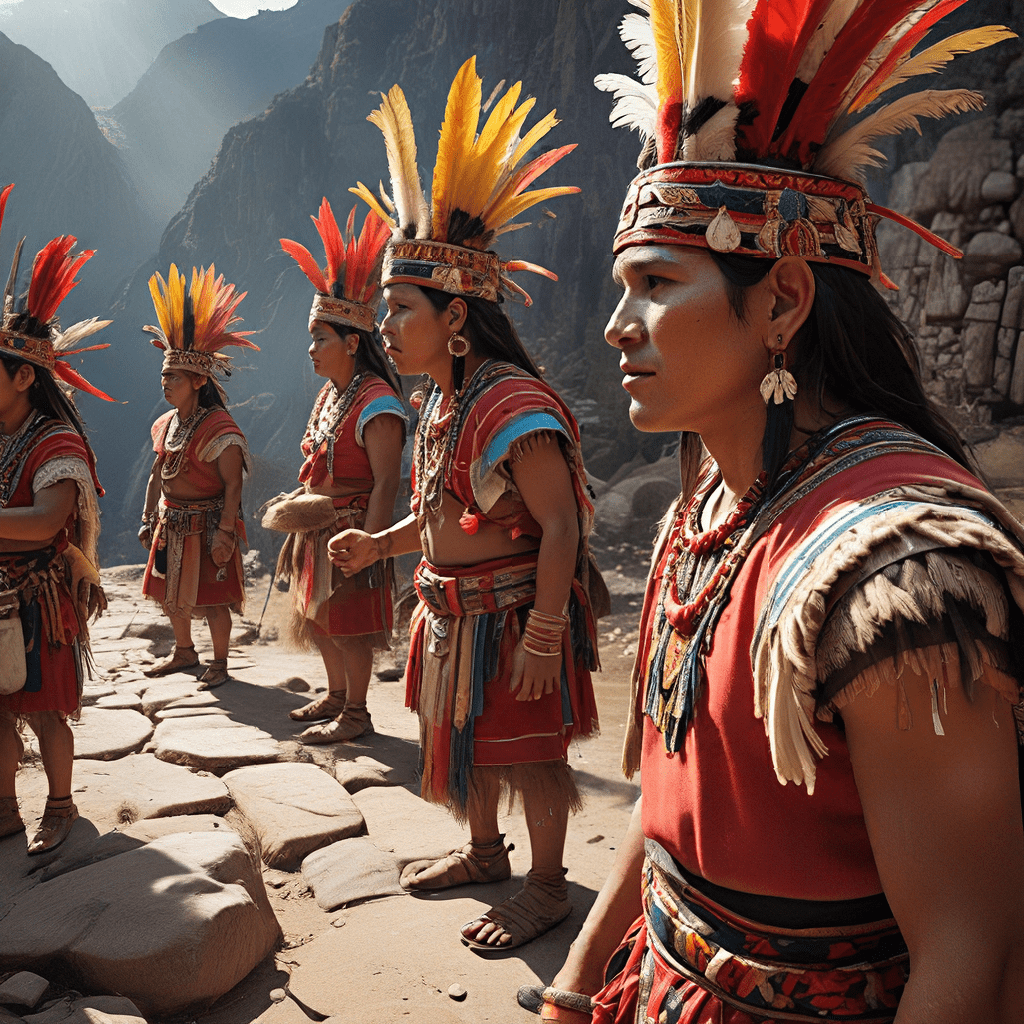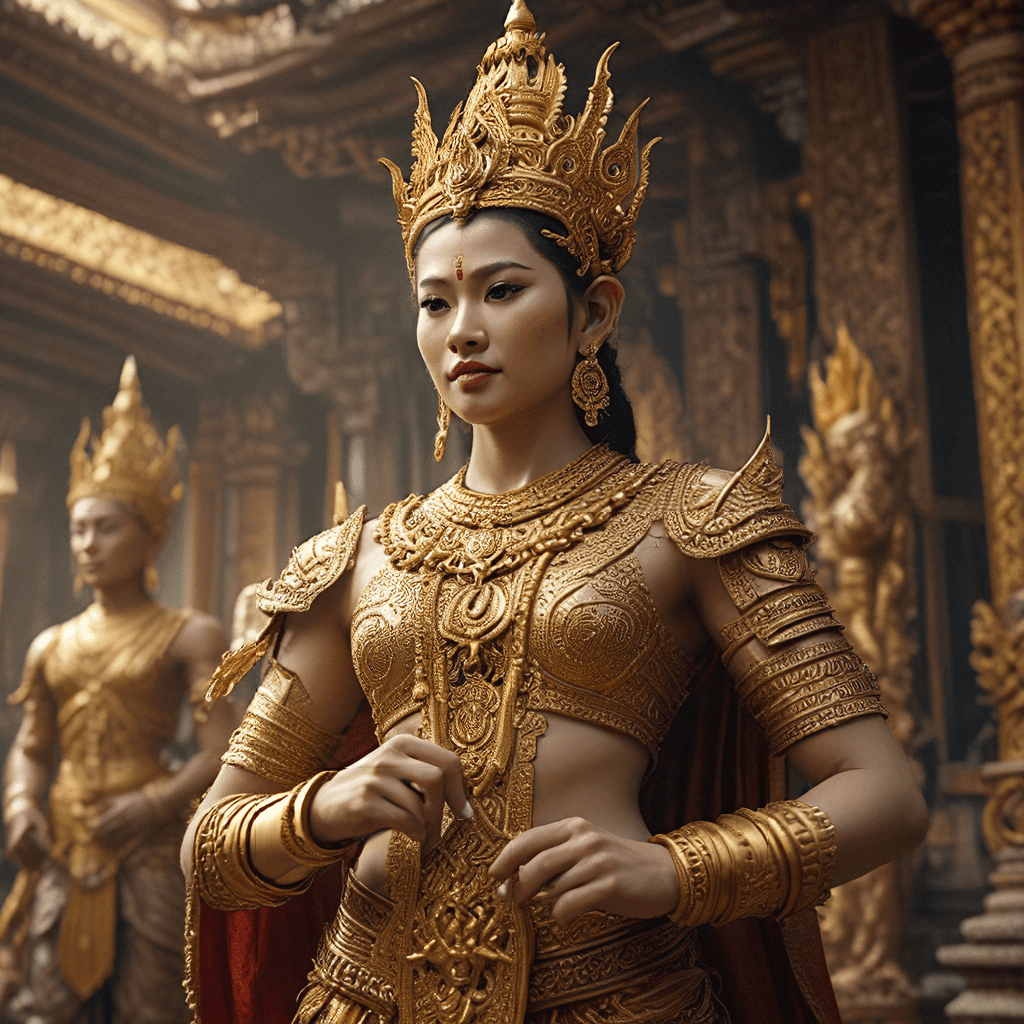1. The Incan Pantheon: A World of Deities and Spirits
The Incan people, who inhabited the Andes Mountains of South America for centuries, worshipped a vast and complex pantheon of deities and spirits. These divine beings played a central role in their lives, influencing everything from daily activities to major political decisions. Understanding the Incan pantheon is crucial to comprehending their culture and their relationship with the natural world.
1.1 Inti: The Sun God and Giver of Life
Inti, the sun god, was the most revered deity in the Incan pantheon. He was believed to be the source of all life and warmth, and his image was often depicted as a golden disk with a human face. The Incas celebrated Inti through numerous festivals and rituals, including the annual Inti Raymi, a four-day celebration held at the winter solstice.
1.2 Mama Quilla: The Moon Goddess and Protector of Women
Mama Quilla, the moon
2. The Sacred Spaces: Temples, Shrines, and Offerings
The Incas expressed their reverence for the gods through their elaborate and intricately designed temples and shrines. These sacred spaces served as the focal points of religious ceremonies and rituals, connecting the people with the divine realm.
2.1 The Coricancha: The Golden Temple of the Sun in Cuzco
The most important religious edifice in the Incan empire was the Coricancha, the "Golden Temple," located in the heart of Cuzco, the imperial capital. Dedicated to Inti, the sun god, the Coricancha was adorned with gold plates and housed numerous statues and representations of deities. It was a place of immense wealth and splendor, a testament to the Incas' devotion to their solar deity.
2.2 Regional Shrines and Huacas: Connecting the People with the Divine
Beyond the Coricancha, the Inca empire was dotted with countless regional shrines and huacas, sacred sites venerated for their spiritual significance. These places were often associated with specific deities or natural features, such as mountains, springs, or caves. People from surrounding communities would visit these shrines to offer prayers and sacrifices, seeking blessings and protection from the gods.
2.3 Offerings and Sacrifices: Pleasing the Gods and Maintaining Balance
The Incas believed that maintaining balance and harmony with the divine realm was essential for their well-being. They offered various types of offerings and sacrifices to appease the gods and ensure their continued favor. These offerings could include food, drink, coca leaves, textiles, precious metals, and even animals. In extreme cases, human sacrifices were also performed, particularly during times of crisis or major events.
3. The Rituals of Daily Life: Prayers, Festivals, and Celebrations
Religion was deeply interwoven into the fabric of daily life for the Incas. They observed numerous rituals and ceremonies throughout the year, expressing their gratitude to the gods, seeking their favor, and marking significant events in their lives.
3.1 Daily Prayers and Offerings: Maintaining a Constant Connection
Individuals and families would offer daily prayers and small offerings to their household deities or local huacas. These offerings could be as simple as a few coca leaves or a small libation of chicha, a fermented corn beverage. These daily rituals served to maintain a constant connection with the divine and express gratitude for the blessings received.
3.2 Seasonal Festivals and Celebrations: Honoring the Cycles of Nature
The Incas celebrated various festivals and celebrations throughout the year, often coinciding with important agricultural events or astronomical phenomena. These festivals served to honor the gods, give thanks for the harvest, and strengthen community bonds. Some of the most important festivals included the Inti Raymi, the four-day celebration of the winter solstice dedicated to Inti, the sun god, and the Capac Raymi, a royal festival celebrating the Inca emperor.
3.3 Inti Raymi: The Festival of the Sun and Thanksgiving
The Inti Raymi, held at the winter solstice (June in the Southern Hemisphere), was the most important and spectacular festival in the Incan calendar. It was a four-day celebration dedicated to Inti, the sun god, and marked the beginning of the new agricultural year. The festival involved elaborate ceremonies, rituals, and offerings, culminating in a grand procession led by the Inca emperor himself. The Inti Raymi was a time of great joy and celebration, expressing gratitude for the past harvest and seeking blessings for the year to come.
4. The Rites of Passage: Birth, Marriage, and Death
The Incas observed specific rituals and ceremonies to mark important transitions in life, such as birth, marriage, and death. These rites of passage were believed to ensure a smooth transition into new stages of life and to honor the deceased in the afterlife.
4.1 Birth Rituals: Welcoming New Life and Integrating into the Community
The birth of a child was a joyous occasion in Incan society, and it was marked by specific rituals intended to welcome the newborn into the community and ensure their well-being. The newborn would be bathed in a ritual purification ceremony, and their umbilical cord would be buried in a sacred place. The child's future would be predicted by observing the flight of a condor, and they would be given a name based on the animal's behavior.
4.2 Marriage Ceremonies: Uniting Families and Strengthening Social Bonds
Marriage was an important social and economic institution in Incan society, and it was marked by elaborate ceremonies that served to unite families and strengthen social bonds. The marriage ceremony typically involved the exchange of gifts between the families, the sharing of a ritual cup of chicha, and the tying of a knot to symbolize the union of the couple. The newlyweds would then be blessed by a priest and given advice on their future roles and responsibilities as husband and wife.
4.3 Death Rituals: Honoring the Ancestors and Ensuring Safe Passage into the Afterlife
Death was viewed as a natural part of the life cycle in Incan society, and it was marked by elaborate rituals intended to honor the deceased and ensure their safe passage into the afterlife. The deceased would be dressed in their finest clothes, adorned with valuable offerings, and buried in a seated position with their knees bent to their chest. The body would be placed in a tomb or chullpa, often located high in the mountains, to be closer to the gods. The family of the deceased would observe a period of mourning, and they would make offerings of food and drink to the deceased's spirit for several months after their death.
5. The Role of the Inca Priests: Mediators Between Humans and Gods
The Inca priests played a crucial role in mediating between humans and the gods. They were responsible for performing rituals and ceremonies, interpreting divine messages, and advising the Inca emperor on matters of religion and state. The most important priest was the Villaq Umu, the High Priest, who served as the supreme religious authority in the empire.
5.1 The Villaq Umu: High Priest and Spiritual Leader
The Villaq Umu, or High Priest, was the most revered and powerful religious figure in the Incan empire. He was responsible for overseeing all religious matters, performing the most important rituals, and advising the Inca emperor on matters of religion and state. The Villaq Umu was chosen from among the most learned and respected priests, and he held a position of immense authority and influence.
5.2 The Yac.



